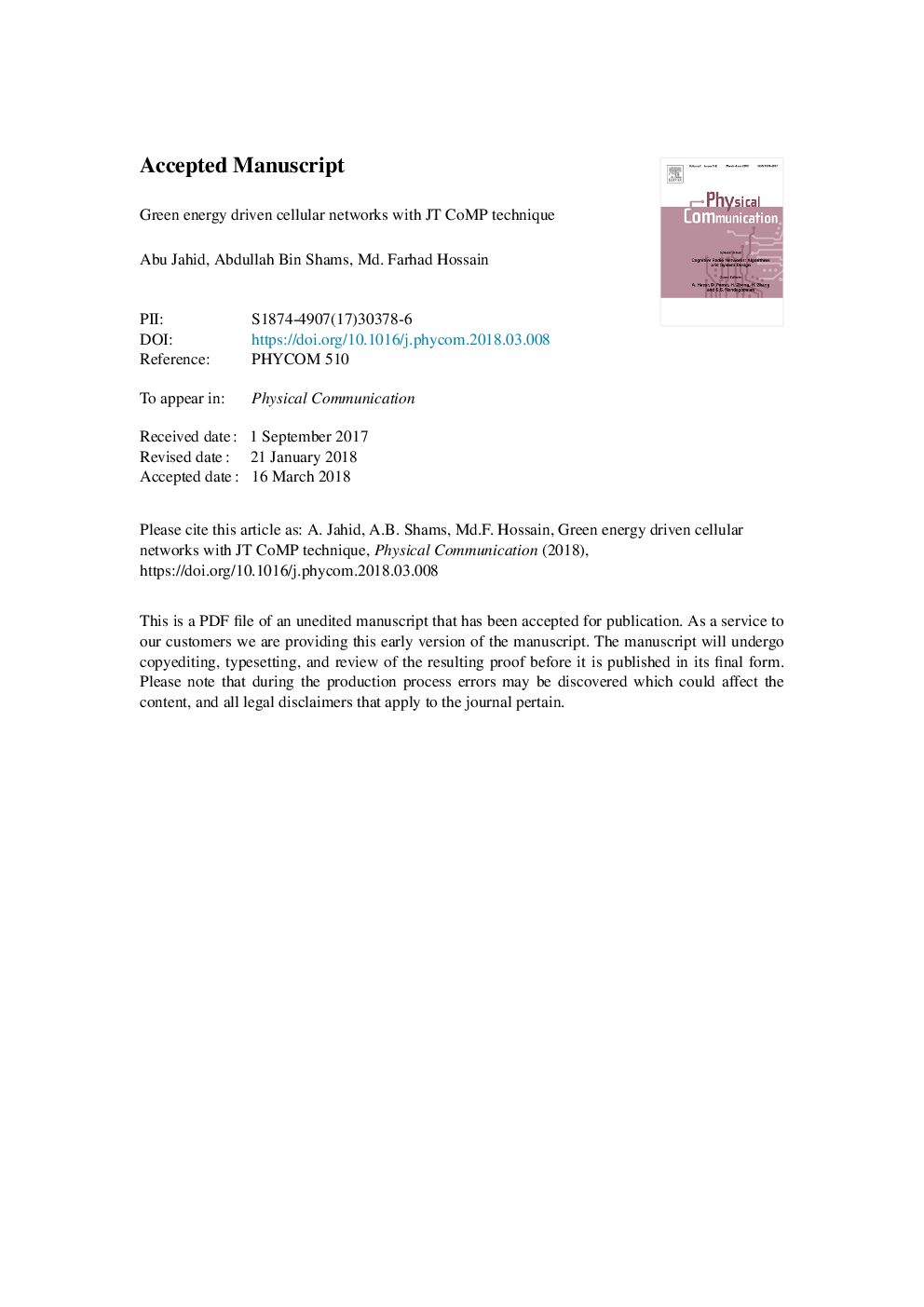| Article ID | Journal | Published Year | Pages | File Type |
|---|---|---|---|---|
| 6889036 | Physical Communication | 2018 | 17 Pages |
Abstract
Concerns about global warming and increasing number of base stations (BSs) leading to rising energy consumption have prompted extensive research effort focusing on energy efficiency (EE) issue for cellular networks. As a result, cellular operators are increasingly deploying renewable energy (RE) sources in BSs as a promising way to reduce the on-grid consumption and operational expenditure. In this paper, we propose a novel framework on green energy driven cellular networks aiming to maximize the utilization of the green energy and minimize the grid energy consumption considering stochastic traffic demand profile. Each BS is equipped with renewable energy generators, such as solar panel along with a set of batteries as an energy storage device and also connected to commercial grid supply. In addition, joint transmission (JT) coordinated multi-point (CoMP) transmission technique is integrated with the proposed model for selecting the best serving BSs for a user equipment (UE). The prime goal is to quantify the EE of various selection schemes namely, distance based, SINR based and SINR-distance based JT CoMP techniques under the proposed network model. Provision of sleep mode approach in BSs is also considered. A thorough investigation in the downlink of LTE-Advanced (LTE-A) cellular system is carried out for evaluating EE performance of the proposed framework under a wide range of network settings. Numerical results validate the proposed network models demonstrating a considerable enhancement in network EE compared to other counterparts.
Related Topics
Physical Sciences and Engineering
Computer Science
Computer Networks and Communications
Authors
Abu Jahid, Abdullah Bin Shams, Md. Farhad Hossain,
